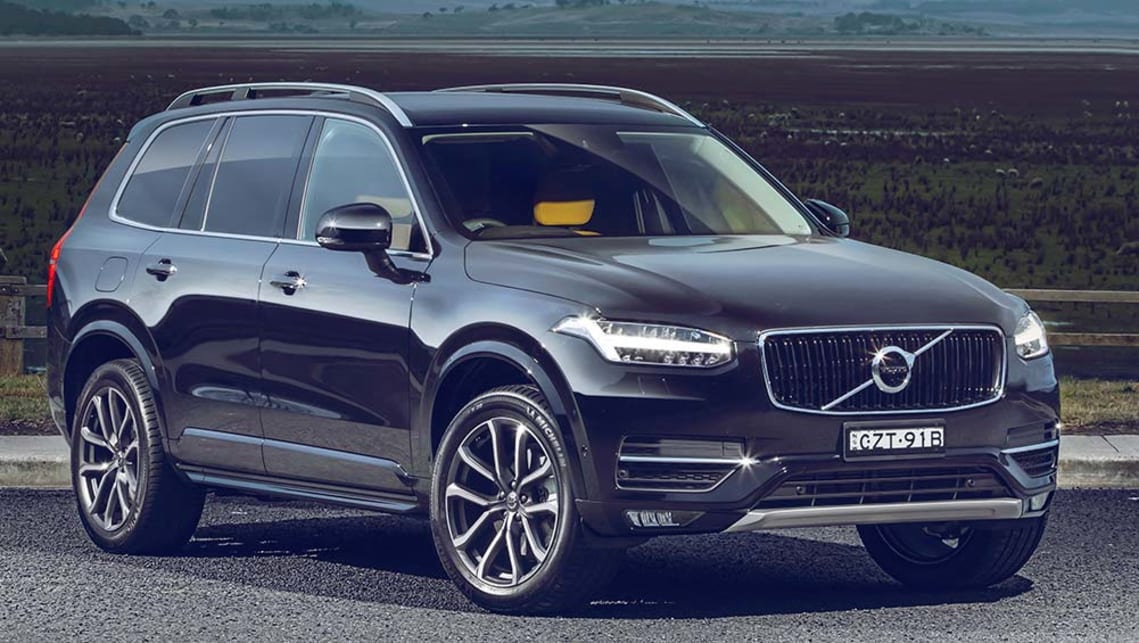
Can Kia topple Mazda in 2025? How the Kia Tasman ute, EV5 electric car and next-gen Mazda CX-5 could shape the sales charts in Australia this year
Kia set a sales record in Australia last year and the company’s boss...
Browse over 9,000 car reviews

NSW Highway Patrol insider suggests European and US alternatives are on the cards after the end of Falcon and Commodore as we know them.
It’s about to get even harder to spot the Highway Patrol when you’re out on the roads, as police will likely be hiding behind the polished grilles of high end luxury models from Europe and the USA - including a family SUV.
After a lengthy selection process brought on by the end of Falcon XR6 Turbo production this year and V8 SS Commodores in 2017, the NSW Highway Patrol has reportedly narrowed its choices down to a Volvo SUV, diesel BMW and a sports version of the menacing Chrysler 300.
According to one insider, we'll soon see an eclectic mix of pursuit vehicles, including the “Chrysler 300 SRT, BMW 535d, and the Volvo XC90".
The Chrysler 300 SRT is the the least surprising of the trio, being a traditional four-door sedan with a 6.4-litre V8 that's capable of flinging the American muscle car from zero to 100 in about 4.5 seconds, thanks to 350kW and 637Nm of torque. It's also closest in price to the existing local heroes, at $65,000 for the 'Core' model and $75,000 for the full-fat SRT, but either is still a considerable hit over the circa-$50,000 locally produced muscle sedans.
The left-field Volvo XC90, as a high-riding, large SUV, is easily the most puzzling choice.
A diesel BMW is less of a straightforward choice, but the 535d is certainly no slouch, with its twin-turbo, three-litre diesel pumping out almost as much torque as the big, American V8 at 630Nm. Being a diesel, it's a little down on power, at 230kW, but it's still capable of a scorching 5.3-second run from zero to 100km/h. Unfortunately, the Bavarian four-door will need a lot of juicy tickets to cover the cost of its $123,700 hit to the hip pocket.
The left-field Volvo XC90, as a high-riding, large SUV, is easily the most puzzling choice. That said, the hybrid T8 version has 300 battery-assisted kilowatts on tap, as well as a combined torque figure of 640Nm. But a sticker price of $122,950 puts it well on the far reaches of acceptability. The cheaper, non-hybrid T6 is a more likely candidate, even though at $101,950, each XC90 will come for the price of two SS Commodores. Even the entry-level diesel XC90 starts at close to $90,000.
The $59,990 Ford Mustang V8 automatic did seem the most likely candidate for future highway cops, until its transmission overheated during a simulated pursuit while being evaluated at the NSW Highway Patrol's testing circuit in Goulburn.
If the Mustang had been successful, it would have meant that Highway Patrol officers could continue with a powerful, rear-wheel-drive car like they’re accustomed to. Although officers do undergo regular training, it's focused on controlling oversteer, balancing throttle and maintaining traction. Four-wheel-drive vehicles like the XC90, require a vastly different driving style when pushed to their limits, requiring retraining for the entire Highway division.
This isn't Ford's first track failure; the existing Falcons needed upgrades to both brakes and transmission to pass the gruelling Highway Patrol entrance exam.
The NSW Highway Patrol is yet to officially confirmed these expensive, left-field choices.
That said, the Subaru WRX, which was another early front-runner, washed out of the competition after failing the Highway Patrol's merciless braking test. NSW's requirements for its highway patrol cars are far higher than that of its neighbour states and territories – the Ford Mustang and Subaru WRX are just two of a raft of cars to have failed its stringent tests, including the Toyota Aurion, which is in active use in other states.
The NSW Highway Patrol is yet to officially confirmed these expensive, left-field choices, but the Highway Patrol is responsible for far more than just chasing down speeding drivers. They're often first on the scene at serious accidents, armed robberies and violent assaults, thanks to a combination of quick cars, trained drivers and the fact that they're already out on the road, not back at the station.
Comments